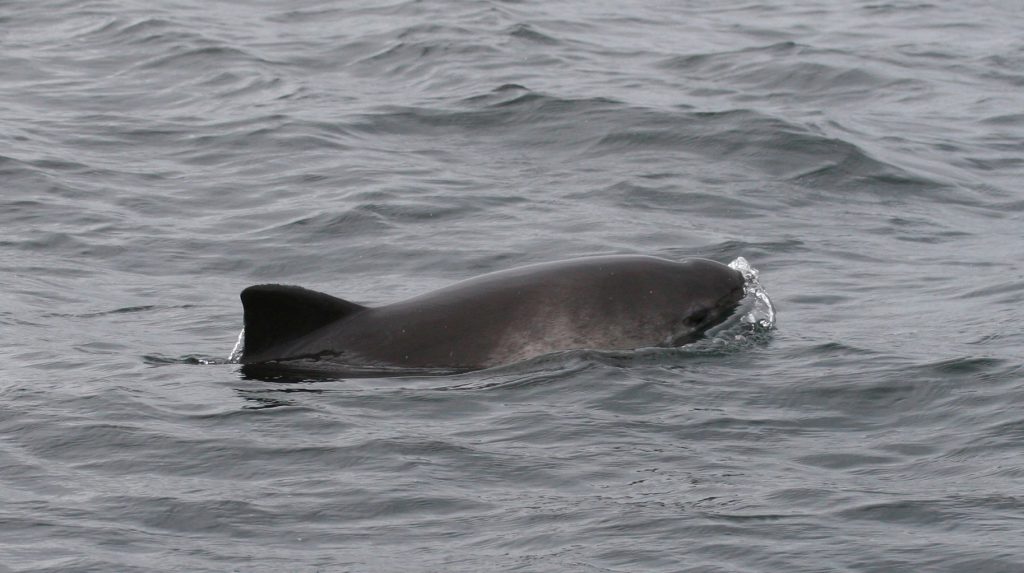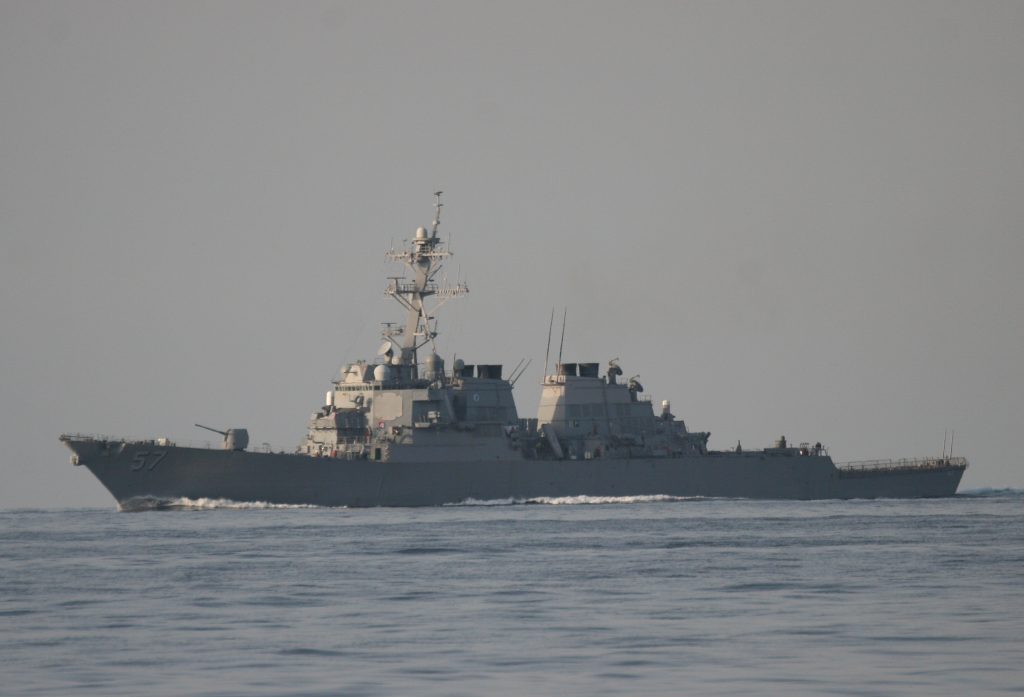What are strandings?
A stranded marine mammal is one that has beached itself on land and cannot return to the water without help, and may also need medical assistance. Cetaceans are fully aquatic animals and, though they breathe air, they cannot survive for long on land. If a whale or dolphin is out of the water for prolonged periods they struggle to support their own weight and can suffocate as their organs collapse. They can also die from dehydration. Most strandings are lone animals, but mass strandings occasionally occur, as has been seen recently in New Zealand and Indonesia. Cetacean mass stranding events (MSEs) are commonly described as two or more cetaceans of the same species coming ashore, usually alive, at the same time and place.
Around the UK and Ireland, over 20,000 records of stranded cetaceans have been collected since 1913. Some recent case studies are detailed at the end of this post. Certain species appear more susceptible to stranding than others, and baleen whales strand much more rarely than dolphins and toothed whales. Around the UK, the most common species to strand are harbour porpoises and common dolphins (Coombes, E. et al. 2019).

Why do strandings occur?
It is not always entirely clear why whales and dolphins beach themselves or end up stranded, and the reasons will not be the same for each case. There are many possibilities, however, and strandings may be caused by a mixture of several factors. Some of these factors may be human induced, such as the use of military sonar, loud blasts, increased boat traffic and therefore noise levels, injuries from boat strikes or entanglements in fishing gear, and disorientation caused by noise pollution. Loud noises in the ocean can confuse cetaceans and interrupt their communication systems, which rely on auditory clues. It is thought that sonar waves can frighten deep-diving whales and force them to surface too quickly, giving them symptoms similar to the bends, or decompression sickness, in humans. The use of military sonar has been linked to the strandings of several beaked whales in Scotland last year. Natural factors can include disease, injuries from natural causes, solar storms or interruption of the magnetic field, or disruption of echolocation due to the nature of the surroundings, i.e. acoustical dead zones can occur based on coastal topography and other geometric effects, distorting echolocation signals.

Information that can be collected from strandings
There is a plethora of information that can be gathered from whale and dolphin strandings, and indeed the carcasses of those animals that did not survive, as, sadly, strandings often lead to death. Understanding the causes of strandings can help in the future conservation of cetaceans, particularly if human interactions are found to be the cause.
Cetacean stranding data can provide important information on past and present diversity for common, rare, and perhaps little known species. Information can be gathered as to the spatial and temporal aggregations of strandings, and trends can then be investigated based on this data.
Evaluations of the carcasses of stranded animals provide valuable information on potential causes of death, such as the presence of diseases, toxins and potentially foreign objects like fishing gear or plastic. Plastic has been found in the stomachs of some cetaceans, causing them to starve to death, highlighting the huge detrimental impact this pollution has on marine life. Patterns of reproduction, diet and health of the individual can also be gleaned from post-mortem examinations.
Numerous measurements are taken from stranded carcasses in order to determine cause of death and whether this was from natural causes or human interaction. Marks on the bodies of cetaceans can indicate human-related causes such as boat strikes and injuries from propellers, or entanglement in fishing equipment, even gunshot wounds. Human-induced marks can be varied, particularly those caused by entanglement. Data such as this helps to identify any outbreaks of diseases in the area, or detect unusual increases in deaths. It also builds a picture of the species, age and condition of cetaceans that are stranding, and helps us to understand what’s happening in the marine environment and devise plans for mitigation. (Barco & Moore 2013).
What to do if you come across a stranded cetacean
There are teams out there who make it their admirable mission to assist stranded whales, dolphins and porpoises and help get them back into the ocean. Around the UK, the British Divers Marine Life Rescue (BDMLR) is the primary organisation carrying out this vital role. They are a charity consisting of volunteer divers and medics who attend strandings and help rescue beached cetaceans. Every year they train 1,000 new marine mammal medics, and they have 20 whale rescue pontoons throughout the UK to aid stranded animals. The Cetacean Strandings Investigation Programme (CSIP) documents all deceased cetaceans that strand around the UK. They study each individual stranding and collect samples and information from the carcasses of stranded animals to establish a cause of death.
If you come across a live stranded cetacean, please contact British Divers Marine Life Rescue on their 24hr rescue hotline – 01825 765546. While you wait for them to arrive, you will receive advice over the phone as to what you can do to help the whale or dolphin. Do not attempt to move or refloat the animal as it may require medical assistance. Be calm and quiet and keep all movements slow and gentle. Try to keep the animal wet by dousing with water and using wet blankets / towels – but do not cover the blowhole. Dig trenches around the pectoral fins and support the animal in an upright position.
If you find a dead cetacean, please contact the Cetacean Strandings Investigation Programme (CSIP – covering England and Wales) – 0800 6520333; or the Scottish Marine Animal Strandings Scheme (SMASS – covering Scotland) – 07979 245893. They collect a wide range of data on each stranded carcass found on UK shores to assist in research and studies. Let them know the location, size of cetacean, species, if known, and overall condition.
Take photos of any stranded whale or dolphin you may find as this can help in studying the reasons for the stranding and assist in future conservation efforts to minimise human-induced threats.
Case studies in the UK
In June 2008, the UK’s largest mass stranding event of common dolphins occurred in Falmouth Bay in Cornwall. There were a total of around 40 dolphins, half of these animals sadly died while the rest were successfully refloated back into the ocean. All of the dolphins that were examined appeared to be in a healthy condition, and a subsequent investigation concluded that naval activity was the most probable cause of this mass stranding.
In January 2016 a total of twenty-nine sperm whales stranded on beaches of the North Sea, several of them on the UK coast. It is thought that the cause of this was due to navigational disruption due to the geography of the area. Most of these whales sadly perished. This is the largest ever recorded sperm whale stranding in this area. Before this, the last mass strandings of sperm whales in the UK were in Scotland in January 1996 and December 1994. There have been fourteen mass strandings of sperm whales in the North Sea since the 16th century.
In November last year, the strandings of several beaked whales in Scotland led to an investigation into nearby Ministry of Defence war games and their use of sonar. Some of the whales were found to be displaying evidence of decompression sickness, which occurs when rising too quickly upwards through areas of differing pressure in the sea. Loud noises can also disorientate cetaceans, damage their hearing and disrupt their communication signals.
A good news story! On 4th January 2021, a team from the British Divers Marine Life Rescue was called to assist a stranded orca in the Bay of Newark on Orkney. The orca, thought to be a young male, was thankfully uninjured and in good condition. The incoming tide was a huge help as the team righted the whale, slid a special dolphin stretcher under him and moved him closer to the sea. The orca appeared strong and able to hold himself up in the water, and when he could the young animal began to swim away on his own. It hoped that this very lucky orca finds his way back to his pod.

Kayleigh
Sea Watch Volunteer
Feature Blogger
Sources and more information
- Sea Watch Foundation » Largest Sperm Whale Stranding Ever Recorded In The North Sea
- The causes of whale strandings: New Zealand Veterinary Journal: Vol 30, No 3 (tandfonline.com)
- Acoustical dead zones and the spatial aggregation of whale strandings – ScienceDirect
- Beaked Whale Strandings and Naval Exercises (dtic.mil)
- Solar storms may trigger sperm whale strandings: explanation approaches for multiple strandings in the North Sea in 2016 | International Journal of Astrobiology | Cambridge Core
- What causes whale mass strandings? (theconversation.com)
- Sea Watch Foundation » Whale, dolphin and porpoise strandings…
- What is a Whale Stranding and Why Does it Happen? – One Green Planet
- A_review_of_Cuviers_beaked_whale_strandi20170530-6534-jgqpqd.pdf (d1wqtxts1xzle7.cloudfront.net)
- What Caused the UK’s Largest Common Dolphin (Delphinus delphis) Mass Stranding Event? (plos.org)
- Periodic variability in cetacean strandings: links to large-scale climate events | Biology Letters (royalsocietypublishing.org)
- The Society for Conservation Biology (wiley.com)
- Spatio-temporal analysis of cetacean strandings and bycatch in a UK fisheries hotspot | SpringerLink
- What can cetacean stranding records tell us? A study of UK and Irish cetacean diversity over the past 100 years – Coombs – 2019 – Marine Mammal Science – Wiley Online Library
- “A note on the unprecedented strandings of 56 deep-diving whales along ” by Sarah J. Dolman, Eunice Pinn et al. (unl.edu)
- https://www.ltpaobserverproject.com/uploads/3/0/2/0/3020041/cetacean_live_stranding_dates_relate_to_geomagnetic_disturbances_-_1986.pdf
- Spatiotemporal mortality and demographic trends in a small cetacean: Strandings to inform conservation management – ScienceDirect
- Withernsea: Whales stranded on beach die – BBC News
- Why do whales and dolphins strand? – Whale & Dolphin Conservation USA
- UK Cetacean Strandings Investigation Programme (ukstrandings.org)
- Mysterious deaths of whales off Scottish coast linked to MoD war games | Metro News
- Orca rescued in Orkney. | British Divers Marine Life Rescue (bdmlr.org.uk)
- Dozens of whales in stranding at Farewell Spit – Project Jonah | RNZ News
- Dolphin Project Assists With Mass Stranding | Dolphin Project
- About BDMLR | British Divers Marine Life Rescue
- What to do if… | British Divers Marine Life Rescue (bdmlr.org.uk)
- This whale had more than 88 pounds of plastic in its stomach when it died (nationalgeographic.com)
- Moore, K.T. and S.G. Barco. 2013. Handbook for Recognizing, Evaluating, and Documenting Human Interaction in Stranded Cetaceans and Pinnipeds. U. S. Department of Commerce, NOAA Technical Memorandum, NOAA-TM NMFSSWFSC-510, 102p.
- Evans, P.G.H. (1998) Ecology of Sperm Whales (Physeter macrocephalus) in the Eastern North Atlantic, with special reference to sightings and strandings records from the British Isles.
- Berrow, S., Evans, P.G.H. and Sheldrick, M. (1993) An analysis of sperm whale Physeter macrocephalus stranding and sighting records from Britain and Ireland.
- Berrow, S., Evans, P.G.H. and Sheldrick, M. (1991) Sperm whale strandings and sightings in Britain and Ireland. Pp. 26-31.
























